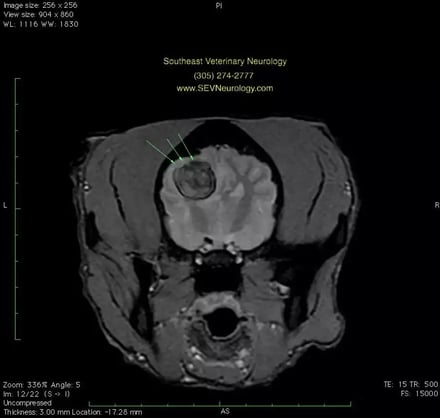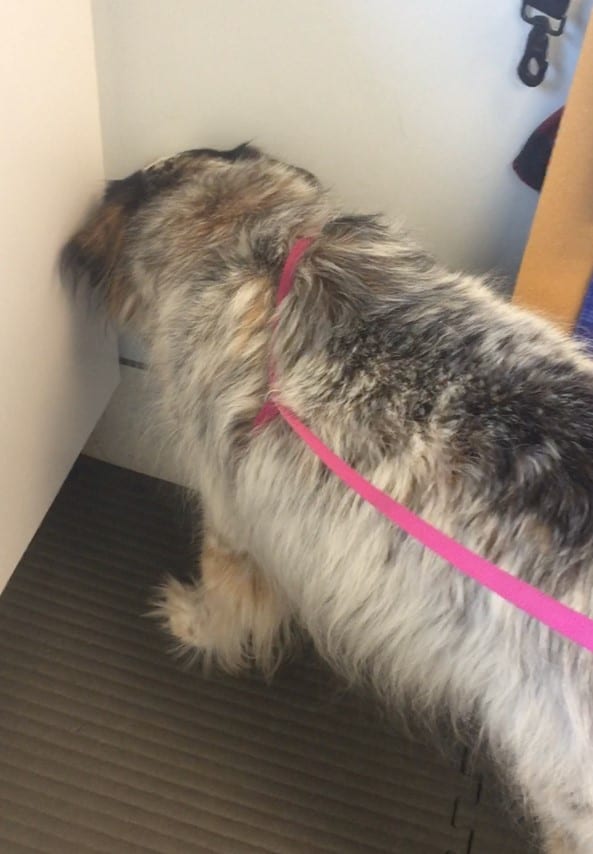Strokes in Dogs and Cats
Home » Conditions We Treat » Strokes in Dogs and Cats
What is a stroke?
A stroke occurs if blood flow to part of the brain is obstructed in some way. It is a relatively common occurrence in small animals that is becoming far more widely diagnosed with the increased usage of magnetic resonance imaging (MRI). If your pet has had a stroke, it can be confusing and stressful for you both. The veterinary neurologists at Southeast Veterinary Neurology (SEVN) will walk you through every step of the way and do everything they can to help your pet have the best life possible. Download the fact sheet.
A stroke can have a lasting effect on your pet's quality of life. If they are showing any of the following symptoms, contact our neurology specialists today.
Symptoms of Strokes in Dogs and Cats
Strokes can damage nerve cells and cause a variety of clinical signs similar to those in dogs and cats with other neurological conditions, such as brain tumors.
Clinical signs that could indicate a stroke include:
- The acute onset of seizures
- Walking in circles
- Weakness on one side of the body
- Poor balance
- Blindness
- Changes in behavior
Types of Strokes and What Causes Them
There are two types of strokes: hemorrhagic (abnormal bleeding) and ischemic (reduced blood flow).
Hemorrhagic stroke or bleeding in the brain can happen as a result of high blood pressure, problems with blood clotting, platelet problems, leaky blood vessels, certain infections, parasites, or toxicity.
Ischemic stroke refers to reduced blood flow to the brain due to blockage of a blood vessel. This blockage can occur as a result of increased blood clotting from hypothyroidism, kidney disease, Cushing’s disease, or cardiac disease.

Diagnosing Strokes in Dogs and Cats

The symptoms of a stroke can look just like other neurological problems, including brain tumors and meningitis. To rule out other possible causes and diagnose a stroke, we will need to run tests like:
- Blood tests to check for issues with the internal organs
- X-rays of the chest and belly
- MRI of the head
Following diagnosis, your vet neurologist might recommend additional testing to find the underlying cause of your pet’s stroke. Further blood work, an abdominal ultrasound, coagulation profiles, and blood pressure testing may be suggested. Knowing the cause helps us find the best treatment.

Using MRI to Diagnose Strokes

MRI is the BEST and ONLY way to diagnose both ischemic and hemorrhagic strokes.
As an example, this is an MRI of a dog with acute onset of seizures, behavior change, walking in circles toward the left, and weakness on the right side of the body. Note that these are also common symptoms of brain tumors.
This image is a “T2-star” or “gradient echo” sequence, where blood products (hemorrhage) appear dark. Along with a SEVN neurologist’s experience, this image (and others) led to the diagnosis of a stroke, which was treated appropriately and successfully.
On the other hand, a CT scan would have likely led to the diagnosis of brain tumor, causing this patient unnecessary treatment or euthanasia. This is one of many reasons that we do not recommend CT for evaluating the brain.
Helping Your Pet Recover
Options for treating a stroke can vary depending on the underlying cause and the severity of the stroke. Even pets that have dramatic symptoms can make an excellent recovery. An accurate diagnosis, finding the underlying cause, supportive care, and physical rehabilitation are all critical to your pet's recovery.


